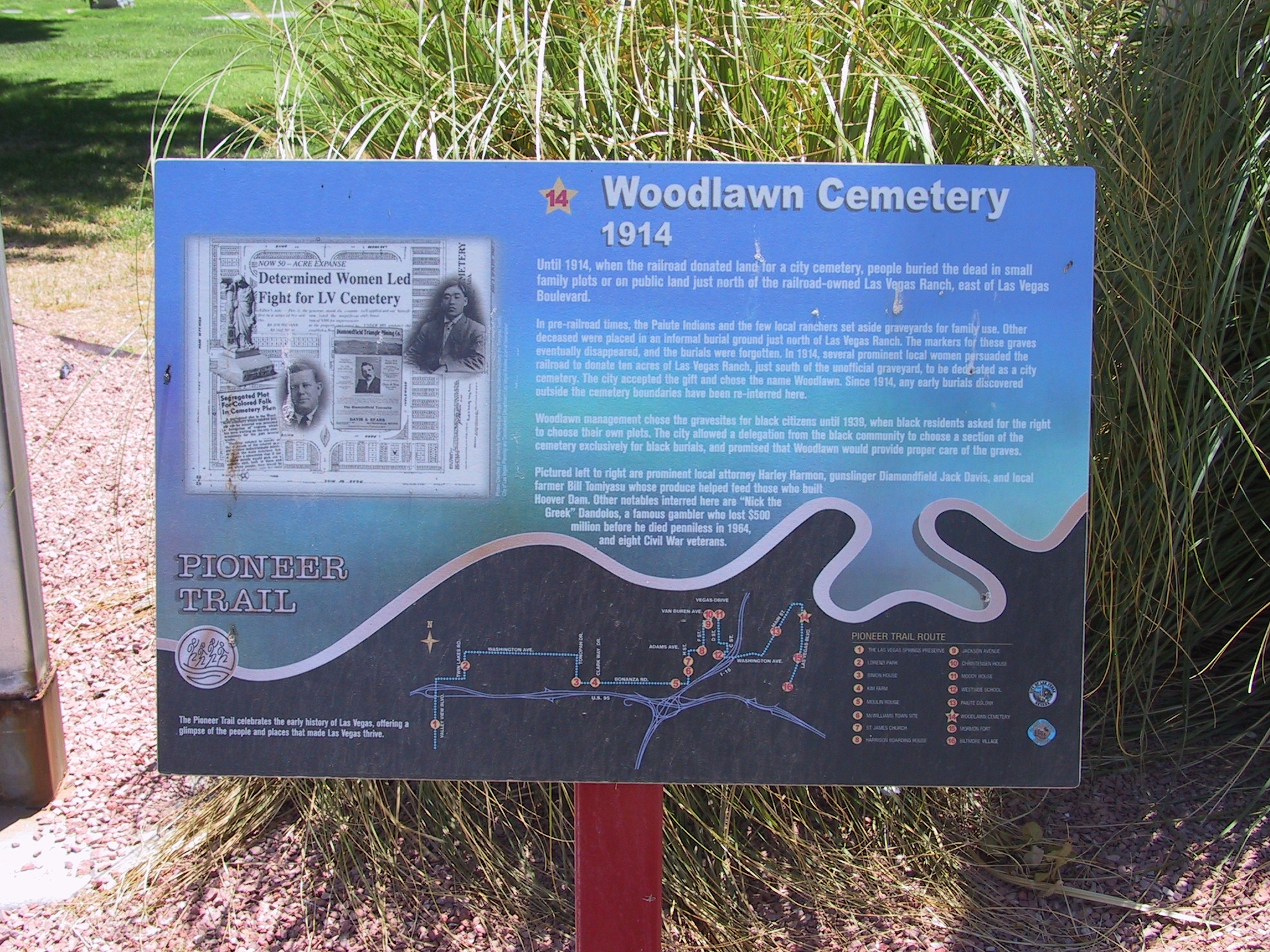Information from the marker:
Until 1914, when the railroad donated land for a city cemetery, people buried the dead in small family plots or on public land just north of the railroad-owned Las Vegas Ranch, east of Las Vegas Boulevard.
In pre-railroad times, the Paiute Indians and the few local ranchers set aside graveyards for family use. Other deceased were placed in an informal burial ground just north of Las Vegas Ranch. The markers for these graces eventually disappeared, and the burials were forgotten. In 1914, several prominent local women persuaded the railroad to donate ten acres of Las Vegas Ranch, just south of the unofficial graveyard, to be dedicated as a city cemetery. The city accepted the gift and chose the name Woodlawn. Since 1914, any early burials discovered outside the cemetery boundaries have been re-interred here.
Woodlawn management chose the gravestones for black citizens until 1939, when black residents asked for the right to choose their own plots. The city allowed a delegation from the black community to choose a section of the cemetery exclusively for black burials, and promised that Woodlawn would provide proper care of the graves.
Pictured left to right are prominent local attorney Harley Harmon, gunslinger Diamondfield Jack Davis, and local farmer Bill Tomiyasu whose produce helped feed those who built Hoover Dam. Other notables interred here are "Nick the Greek" Daneolos, a famous gambler who lost $500 million before he died penniless in 1964, and eight Civil War veterans.
Information from the brochure:
Until 1914, when the railroad donated land for a city cemetery, people buried the dead in small family plots or on public land reserved for burials. Woodlawn was created in 1914 when several prominent local women persuaded the railroad to donate ten acres to be dedicated as a city cemetery. Several notable local residents and characters are interred here. The cemetery is listed on the National Register of Historic Places.






















